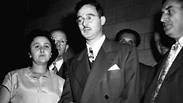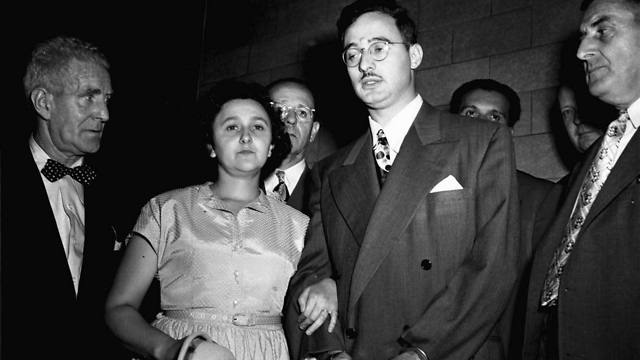

New evidence bolsters suspicion that 'atomic spy' Ethel Rosenberg was executed based on false evidence
According to recently released trial transcripts, David Greenglass, Ethel's brother, said they he and Ruth never discussed her role 'at all'; it is likely that it was David's wife Ruth who typed up the notes given to the Soviets.
The brother of Ethel Rosenberg, who was a star witness against his sister and brother-in-law in a sensational Cold War atomic spying case, minimized his dealings with his sister during an earlier appearance before a grand jury and said that they had never discussed her role "at all," according to US court records unsealed Wednesday.
The revelation may heighten public suspicion that Ethel Rosenberg was wrongly convicted and executed in an espionage case that captivated the country at the height of the McCarthy-era frenzy about Communist allegiances.
Rosenberg and her husband Julius were put to death in 1953 after being convicted of conspiring to steal secrets about the atomic bomb for the Soviet Union, though they maintained their innocence to the very end.
The grand jury testimony from David Greenglass, whose damning statements at trial helped secure the convictions of his sister and brother-in-law, had been withheld from public view even as other crucial court records have been unsealed in the last decade. A federal judge in New York, responding to requests from a group of historians and archivists, ordered the 46-page transcript unsealed following Greenglass's death last year at age 92.
Historians had greatly anticipated the release of the records — the final crucial piece of evidence to be made public — in hopes of learning more how a brother came to betray his sister with trial testimony that, decades later, he revealed to be false.
Greenglass, who was indicted as a co-conspirator and was himself sentenced to 10 years in prison, said at trial that he had given the Rosenbergs research data that he had obtained while working as an Army machinist at the Los Alamos, New Mexico headquarters of the top-secret Manhattan Project to build the atomic bomb.
He said he saw his older sister transcribing the information on a portable typewriter at the Rosenbergs' New York apartment in 1945.
But on August 7, 1950, he told a grand jury that he and his sister never discussed such matters. He told a prosecutor how he waffled about whether to leave the Army, but that Julius Rosenberg was adamant that he should continue with his service so he could "continue giving him information."
He was then asked whether his sister, Ethel, was similarly insistent about his Army career. Greenglass replied, "I said before, and say it again, honestly, this is a fact: I never spoke to my sister about this at all."
Decades after the trial, Greenglass was quoted by a New York Times journalist as having admitted to lying at trial about his sister in order to protect his wife. In a May decision that ordered the records unsealed, U.S. District Judge Alvin Hellerstein noted that Greenglass said it was likely, Ruth Greenglass, rather than Ethel Rosenberg, who typed up the notes that were passed to the Soviets.
After Greenglass's death, the Rosenbergs' sons issued a statement saying that David and Ruth Greenglass were the ones who passed atomic secrets on to the Soviets, then "pinned what they did on our parents — a calculated ploy to save themselves by fingering our parents as the scapegoats the government demanded."

















